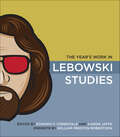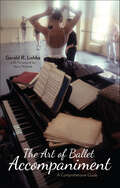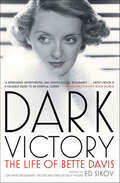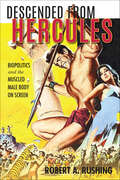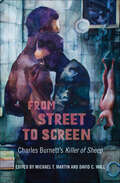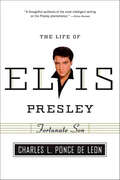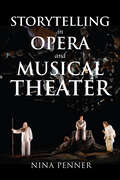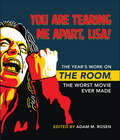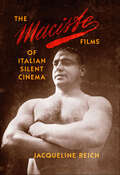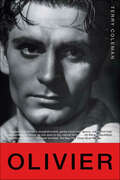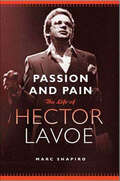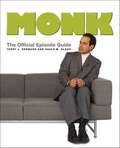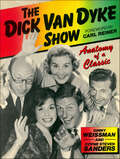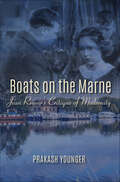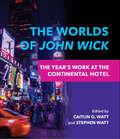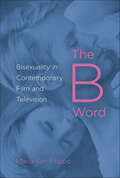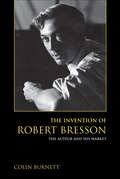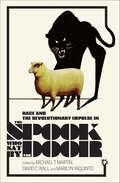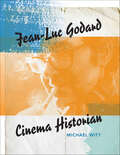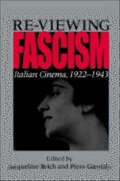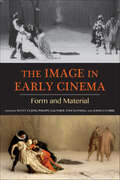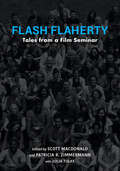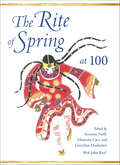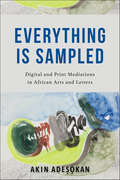- Table View
- List View
The Year's Work in Lebowski Studies (The Year's Work)
by William Preston RobertsonA massive underground sensation, The Big Lebowski has been hailed as the first cult film of the internet age. In this book, 21 fans and scholars address the film's influences—westerns, noir, grail legends, the 1960s, and Fluxus—and its historical connections to the first Iraq war, boomers, slackerdom, surrealism, college culture, and of course bowling. The Year's Work in Lebowski Studies contains neither arid analyses nor lectures for the late-night crowd, but new ways of thinking and writing about film culture.
The Art of Ballet Accompaniment: A Comprehensive Guide
by Gerald R. LishkaThe Art of Ballet Accompaniment: A Comprehensive Guide addresses every imaginable topic and challenge that a ballet accompanist—whether a novice or a more experienced practitioner—might encounter.More than just a facile anthology of accessible music, this inclusive guide details all aspects of playing for ballet, including a complete manual for editing piano literature to accompany ballet technique classes. Author Gerald R. Lishka encourages ballet accompanists to be imaginative, creative, independent artists who can also communicate effectively with dance instructors. In addition, he clarifies the necessary balance between the use of existing musical scores and the art of improvisation. Featuring a new foreword by Kyra Nichols, an expanded section on Lishka's personal philosophy, an updated section on barre from Alison Hennessey, and over 100 music examples, The Art of Ballet Accompaniment offers invaluable advice for all levels of pianists and accompanists.
Considering Doris Day: A Biography
by Tom SantopietroThe biggest female box office attraction in Hollywood history, Doris Day remains unequalled as the only entertainer who has ever triumphed in movies, radio, recordings, and a multi-year weekly television series. America's favorite girl next door may have projected a wholesome image that led Oscar Levant to quip "I knew Doris Day before she was a virgin," but in Considering Doris Day Tom Santopietro reveals Day's underappreciated and effortless acting and singing range that ran the gamut from musicals to comedy to drama and made Day nothing short of a worldwide icon. Covering the early Warner Brothers years through Day's triumphs working with artists as varied as Alfred Hitchcock and Bob Fosse, Santopietro's smart and funny book deconstructs the myth of Day as America's perennial virgin, and reveals why her work continues to resonate today, both onscreen as pioneering independent career woman role model, and off, as a recipient of the Presidential Medal of Freedom, the United States' highest civilian honor. Praised by James Cagney as "my idea of a great actor" and by James Garner as "the Fred Astaire of comedy," Doris Day became not just America's favorite girl, but the number one film star in the world. Yet after two weekly television series, including a triumphant five year run on CBS, she turned her back on show business forever. Examining why Day's worldwide success in movies overshadowed the brilliant series of concept recordings she made for Columbia Records in the '50s and '60s, Tom Santopietro uncovers the unexpected facets of Day's surprisingly sexy acting and singing style that led no less an observer than John Updike to state "She just glowed for me." Placing Day's work within the social context of America in the second half of the twentieth century, Considering Doris Day is the first book that grants Doris Day her rightful place as a singular American artist.
Dark Victory: The Life of Bette Davis
by Ed SikovThe legendary Hollywood star blazes a fiery trail in this enthralling portrait of a brilliant actress and the movies her talent elevated to greatnessShe was magnificent and exasperating in equal measure. Jack Warner called her "an explosive little broad with a sharp left." Humphrey Bogart once remarked, "Unless you're very big she can knock you down." Bette Davis was a force of nature—an idiosyncratic talent who nevertheless defined the words "movie star" for more than half a century and who created an extraordinary body of work filled with unforgettable performances. In Dark Victory, the noted film critic and biographer Ed Sikov paints the most detailed picture ever delivered of this intelligent, opinionated, and unusual woman who was—in the words of a close friend—"one of the major events of the twentieth century." Drawing on new interviews with friends, directors, and admirers, as well as archival research and a fresh look at the films, this stylish, intimate biography reveals Davis's personal as well as professional life in a way that is both revealing and sympathetic. With his wise and well-informed take on the production and accomplishments of such movie milestones as Jezebel, All About Eve, and Now, Voyager, as well as the turbulent life and complicated personality of the actress who made them, Sikov's Dark Victory brings to life the two-time Academy Award–winning actress's unmistakable screen style, and shows the reader how Davis's art was her own dark victory.
Descended from Hercules: Biopolitics and the Muscled Male Body on Screen (New Directions in National Cinemas)
by Robert A. RushingMuscles, six-pack abs, skin, and sweat fill the screen in the tawdry and tantalizing peplum films associated with epic Italian cinema of the 1950s and 1960s. Using techniques like slow motion and stopped time, these films instill the hero's vitality with timeless admiration and immerse the hero's body in a world that is lavishly eroticized but without sexual desire. These "sword and sandal" films represent a century-long cinematic biopolitical intervention that offers the spectator an imagined form of the male body—one free of illness, degeneracy, and the burdens of poverty—that defends goodness with brute strength and perseverance, and serves as a model of ideal citizenry. Robert A. Rushing traces these epic heroes from Maciste in Cabiria in the early silent era to contemporary transnational figures like Arnold Schwarzenegger in Conan the Barbarian, and to films such as Zach Snyder's 300. Rushing explores how the very tactile modes of representation cement the genre's ideological grip on the viewer.
From Street to Screen: Charles Burnett's Killer of Sheep (Studies in the Cinema of the Black Diaspora)
by Michael T. Martin and David C. WallCharles Burnett's 1977 film, Killer of Sheep is one of the towering classics of African American cinema. As a deliberate counterpoint to popular blaxploitation films of the period, it combines harsh images of the banality of everyday oppression with scenes of lyrical beauty, and depictions of stark realism with flights of comic fancy. From Street to Screen: Charles Burnett's Killer of Sheep is the first book-length collection dedicated to the film and designed to introduce viewers to this still relatively unknown masterpiece. Beginning life as Burnett's master's thesis project in 1973, and shot on a budget of $10,000, Killer of Sheep immediately became a cornerstone of the burgeoning movement in African American film that came to be known variously as the LA School or LA Rebellion. By bringing together a wide variety of material, this volume covers both the politics and aesthetics of the film as well as its deeper social and contextual histories. This expansive and incisive critical companion will serve equally as the perfect starting point and standard reference for all viewers, whether they are already familiar with the film or coming to it for the first time.
Fortunate Son: The Life of Elvis Presley
by Charles L. Ponce de LeonElvis Presley was celebrity's perfect storm. His sole but substantial contribution was talent, a fact Charles L. Ponce de Leon is careful to demonstrate throughout his wonderfully contextual Fortunate Son. Even as the moments of lucidity necessary to exercise that talent grew rarer and rarer, Elvis proved his musical gifts right up to the end of his life. Beyond that, however, he was fortune's child. Fortunate Son succinctly traces out the larger shifts that repeatedly redefined the cultural landscape during the 1950s, 1960s, and 1970s, using Elvis's life to present a brief history of American popular culture during these tumultuous decades.
Storytelling in Opera and Musical Theater (Musical Meaning and Interpretation)
by Nina PennerStorytelling in Opera and Musical Theater is the first systematic exploration of how sung forms of drama tell stories. Through examples from opera's origins to contemporary musicals, Nina Penner examines the roles of character-narrators and how they differ from those in literary and cinematic works, how music can orient spectators to characters' points of view, how being privy to characters' inner thoughts and feelings may evoke feelings of sympathy or empathy, and how performers' choices affect not only who is telling the story but what story is being told. Unique about Penner's approach is her engagement with current work in analytic philosophy. Her study reveals not only the resources this philosophical tradition can bring to musicology but those which musicology can bring to philosophy, challenging and refining accounts of narrative, point of view, and the work-performance relationship within both disciplines. She also considers practical problems singers and directors confront on a daily basis, such as what to do about Wagner's Jewish caricatures and the racism of Orientalist operas. More generally, Penner reflects on how centuries-old works remain meaningful to contemporary audiences and have the power to attract new, more diverse audiences to opera and musical theater. By exploring how practitioners past and present have addressed these issues, Storytelling in Opera and Musical Theater offers suggestions for how opera and musical theater can continue to entertain and enrich the lives of 21st-century audiences.
You Are Tearing Me Apart, Lisa!: The Year's Work on The Room, the Worst Movie Ever Made (The Year's Work)
by Adam M. RosenWhen released in 2003, The Room, an obscure, self-financed relationship drama by an eccentric self-taught filmmaker named Tommy Wiseau, should have been completely forgotten. Yet nearly two decades later, "the worst movie ever made"—as many a critic would have it—has become the most popular cult film since The Rocky Horror Picture Show.In You Are Tearing Me Apart, Lisa!, contributors explore this priceless cultural artifact, offering fans and film buffs critical insight into the movie's various meanings, historical context, and place in the cult canon. Even if by complete accident, The Room touches on many issues of modern concern, including sincerity, authenticity, badness, artistic value, gender relations, Americanness, Hollywood conventions, masculinity, and even the meaning of life. Revealing the timeless, infamous power of Wiseau's The Room, You Are Tearing Me Apart, Lisa! is a deeply entertaining deconstruction of an original work of all-American failure.
The Maciste Films of Italian Silent Cinema
by Jacqueline ReichItalian film star Bartolomeo Pagano's "Maciste" played a key role in his nation's narratives of identity during World War I and after. Jacqueline Reich traces the racial, class, and national transformations undergone by this Italian strongman from African slave in Cabiria (1914), his first film, to bourgeois gentleman, to Alpine soldier of the Great War, to colonial officer in Italy's African adventures. Reich reveals Maciste as a figure who both reflected classical ideals of masculine beauty and virility (later taken up by Mussolini and used for political purposes) and embodied the model Italian citizen. The 12 films at the center of the book, recently restored and newly accessible to a wider public, together with relevant extra-cinematic materials, provide a rich resource for understanding the spread of discourses on masculinity, and national and racial identities during a turbulent period in Italian history. The volume includes an illustrated appendix documenting the restoration and preservation of these cinematic treasures.
Olivier: The Story Of A Great Theatre From Kean To Olivier To Spacey
by Terry ColemanBased on exclusive, unprecedented access, the definitive biography of Sir Laurence Olivier, the dashing, self-invented Englishman who became the greatest actor of the twentieth centurySir Laurence Olivier met everyone, knew everyone, and played every role in existence. But Olivier was as elusive in life as he was on the stage, a bold and practiced pretender who changed names, altered his identity, and defied characterization. In this mesmerizing book, acclaimed biographer Terry Coleman draws for the first time on the vast archive of Olivier's private papers and correspondence, and those of his family, finally uncovering the history and the private self that Olivier worked so masterfully all his life to obscure. Beginning with the death of his mother at age eleven, Olivier was defined throughout his life by a passionate devotion to the women closest to him. Acting and sex were for him inseparable: through famous romances with Vivien Leigh and Joan Plowright and countless trysts with lesser-known mistresses, these relationships were constantly entangled with his stage work, each feeding the other and driving Olivier to greater heights. And the heights were great: at every step he was surrounded by the foremost celebrities of the time, on both sides of the Atlantic—Richard Burton, Greta Garbo, William Wyler, Katharine Hepburn. The list is as long as it is dazzling.Here is the first comprehensive account of the man whose autobiography, written late in his life, told only a small part of the story. In Olivier, Coleman uncovers the origins of Olivier's genius and reveals the methods of the century's most fascinating performer.
Passion and Pain: The Life of Hector Lavoe
by Marc ShapiroA definitive biography of Hector Lavoe's rise from Puerto Rico to stardom in New York that led to sold-out concerts and best-selling salsa albums, yet gave way to drug addiction, a strained marriage and tragedy.From the poverty-stricken streets of Ponce, Puerto Rico to the vibrant barrios of New York City, HECTOR LAVOE became the singer of all singers, and the driving-force behind the Salsa movement in the mid-1960s. His popularity rivaled that of his contemporaries, Tito Puente, Celia Cruz and Johnny Pacheco.Behind the music, Hector's life was filled with drugs, alcohol and women. An endless stream of tragedy plagued him, including a gun-related accident that killed his son, Hector's ninth floor jump from a hotel window, and his death in 1993 from AIDS. But Hector's pristine voice, one-of-a-kind stage performances, sold-out concerts and bestselling albums were what his fans remember most and what made him an international icon. His music brought joy to legions of people, and it continues today.Marc Shapiro's Passion and Pain is "A no-holds barred biography" (Uptown Magazine) of a fascinating life.
Monk: The Official Episode Guide
by Terry J. Erdmann Paula M. BlockThis is the official episode guide to the USA Network hit television series Monk, starring two-time Emmy Award winner Tony Shalhoub.Monk is one of the most popular series currently on television. Fans have come to enjoy the antics and erstwhile efforts of obsessive-compulsive Adrian Monk, who was once a rising star with the San Francisco Police Department until the tragic murder of his wife pushed him to the brink of a breakdown. This authorized guide covers the first four extraordinary seasons and is complete with a foreword from the show's creator, Andy Breckman, as well as an afterword from the show's star.Authors Terry J. Erdmann and Paula M. Block were granted exclusive interviews, behind-the-scenes secrets, and total access to the scripts and sets to bring a comprehensive look at one of today's most brilliant defective detectives.This is the ultimate book for fans of Monk!
The Dick Van Dyke Show: Anatomy of a Classic
by Ginny Weissman Coyne Steven SandersIn the history of television, there are very few shows that can truly be called "classics." The Dick Van Dyke Show is one of those few--and for the first time, authors Weissman and Sanders have succeed in capturing the unique flavor of this very appealing, warm comedy that went straight to the heart of the American public. An affectionate and nostalgic portrait of a show more than twenty years old that is still in reruns, The Dick Van Dyke Show tells the inside story of the situational comedy whose phenomenal success was a surprise even to its creators.Tracing its evolution from the pilot, Head of the Family starring Carl Reiner, through the ordeal of finding the right actor to play the clumsy but talented TV writer Rob Petrie, gathering the supporting cast that included Rose Marie and Morey Amsterdam, whose presence added a sharp-edged humor to the series, to the discovery of the largely unknown Mary Tyler Moore to play the Capri pants-clad Laura Petrie, The Dick Van Dyke Show plots the day-to-day course of getting and keeping the show on the air. Written with the complete cooperation of every member of the cast, this book takes us through the weekly process of consistently fine writing, rehearsing, improvising, and polishing the show in which the entire company participated. From start to finish, the cast was a tight group whose personal warmth, vitality, and camaraderie created a unique chemistry that shone through every episode.Containing over 100 photos, synopses of all 158 episodes and the complete script of one of them, lists of all the awards garnered by the show and its cast during its five-year run, and an update on where everyone is today, The Dick Van Dyke Show is a loving and carefully researched tribute to one of the most beloved comedy series of all time.
Boats on the Marne: Jean Renoir's Critique of Modernity
by Prakash YoungerBoats on the Marne offers an original interpretation of Jean Renoir's celebrated films of the 1930s, treating them as a coherent narrative of philosophical response to the social and political crises of the times. Grounded in a reinterpretation of the foundational film-philosopher André Bazin, and drawing on work from a range of disciplines (film studies, art history, comparative literature, political and cultural history), the book's coordinated consideration of Renoir's films, writings, and interviews demonstrates his obsession with the concept of romanticism. Renoir saw romanticism to be a defining feature of modernity, a hydra-headed malady which intimately shapes our personal lives, culture, and politics, blinding us and locking us into agonistic relationships and conflict. While mapping the popular manifestations of romanticism that Renoir engaged with at the time, this study restores the philosophic weight of his critique by tracing the phenomenon back to its roots in the work and influence of Jean-Jacques Rousseau, who first articulated conceptions of human desire, identity, community, and history that remain pervasive today. Prakash Younger argues that Renoir's films of the 1930s articulate a multi-stranded narrative through which the director thinks about various aspects of romanticism and explores the liberating possibilities of an alternative paradigm illuminated by the thought of Plato, Montaigne, and the early Enlightenment. When placed in the context of the long and complex dialogue Renoir had with his audience over the course of the decade, masterpieces such as La Grande Illusion and La Règle du Jeu reveal his profound engagement with issues of political philosophy that are still very much with us today.
The Worlds of John Wick: The Year's Work at the Continental Hotel (The Year's Work)
by Caitlin G. Watt and Stephen WattEach John Wick film has earned more money and recognition than its predecessor, defying the conventional wisdom about the box office's action movie landscape, normally dominated by superhero movies and science fiction epics.As The Worlds of John Wickexplores, the worldbuilding of John Wick offers thrills that you simply can't find anywhere else. The franchise's plot combines familiar elements of the revenge thriller and crime film with seamlessly coordinated action. One of its most distinctive appeals, however, is the detailed and multifaceted fictional world—or rather, worlds—it constructs. The contributors to this volume consider everything from fight sequences, action aesthetics, and stunts to grief, cinematic space and time, and gender performance to map these worlds and explore how their range and depth make John Wick a hit. A deep dive into this popular neo-noir franchise, The Worlds of John Wickcelebrates and complicates the cult phenomenon that is John Wick.
The B Word: Bisexuality in Contemporary Film and Television
by Maria San FilippoOften disguised in public discourse by terms like "gay," "homoerotic," "homosocial," or "queer," bisexuality is strangely absent from queer studies and virtually untreated in film and media criticism. Maria San Filippo aims to explore the central role bisexuality plays in contemporary screen culture, establishing its importance in representation, marketing, and spectatorship. By examining a variety of media genres including art cinema, sexploitation cinema and vampire films, "bromances," and series television, San Filippo discovers "missed moments" where bisexual readings of these texts reveal a more malleable notion of subjectivity and eroticism. San Filippo's work moves beyond the subject of heteronormativity and responds to "compulsory monosexuality," where it's not necessarily a couple's gender that is at issue, but rather that an individual chooses one or the other. The B Word transcends dominant relational formation (gay, straight, or otherwise) and brings a discursive voice to the field of queer and film studies.
The Invention of Robert Bresson: The Auteur and His Market
by Colin BurnettChallenging the prevailing notion among cinephiles that the auteur is an isolated genius interested primarily in individualism, Colin Burnett positions Robert Bresson as one whose life's work confronts the cultural forces that helped shape it. Regarded as one of film history's most elusive figures, Bresson (1901–1999) carried himself as an auteur long before cultural magazines, like the famed Cahiers du cinéma, advanced the term to describe such directors as Jacques Tati, Alfred Hitchcock, and Jean-Luc Godard. In this groundbreaking study, Burnett combines biography with cultural history to uncover the roots of the auteur in the alternative cultural marketplace of midcentury France.
Race and the Revolutionary Impulse in The Spook Who Sat by the Door (Studies in the Cinema of the Black Diaspora)
by Michael T. Martin, David C. Wall and Marilyn YaquintoIvan Dixon's 1973 film, The Spook Who Sat by the Door, captures the intensity of social and political upheaval during a volatile period in American history. Based on Sam Greenlee's novel by the same name, the film is a searing portrayal of an American Black underclass brought to the brink of revolution. This series of critical essays situates the film in its social, political, and cinematic contexts and presents a wealth of related materials, including an extensive interview with Sam Greenlee, the original United Artists' press kit, numerous stills from the film, and the original screenplay. This fascinating examination of a revolutionary work foregrounds issues of race, class, and social inequality that continue to incite protests and drive political debate.
Jean-Luc Godard, Cinema Historian
by Michael WittOriginally released as a videographic experiment in film history, Jean-Luc Godard's Histoire(s) du cinéma has pioneered how we think about and narrate cinema history, and in how history is taught through cinema. In this stunningly illustrated volume, Michael Witt explores Godard's landmark work as both a specimen of an artist's vision and a philosophical statement on the history of film. Witt contextualizes Godard's theories and approaches to historiography and provides a guide to the wide-ranging cinematic, aesthetic, and cultural forces that shaped Godard's groundbreaking ideas on the history of cinema.
Re-viewing Fascism: Italian Cinema, 1922–1943
by Jacqueline Reich and Piero GarofaloWhen Benito Mussolini proclaimed that "Cinema is the strongest weapon," he was telling only half the story. In reality, very few feature films during the Fascist period can be labeled as propaganda. Re-viewing Fascism considers the many films that failed as "weapons" in creating cultural consensus and instead came to reflect the complexities and contradictions of Fascist culture. The volume also examines the connection between cinema of the Fascist period and neorealism—ties that many scholars previously had denied in an attempt to view Fascism as an unfortunate deviation in Italian history. The postwar directors Luchino Visconti, Roberto Rossellini, and Vittorio de Sica all had important roots in the Fascist era, as did the Venice Film Festival. While government censorship loomed over Italian filmmaking, it did not prevent frank depictions of sexuality and representations of men and women that challenged official gender policies. Re-viewing Fascism brings together scholars from different cultural and disciplinary backgrounds as it offers an engaging and innovative look into Italian cinema, Fascist culture, and society.
The Image in Early Cinema: Form and Material (Early Cinema In Review: Proceedings Of Domitor Ser.)
by Scott Curtis Joshua Yumibe Tom Gunning Philippe GauthierIn The Image in Early Cinema, the contributors examine intersections between early cinematic form, technology, theory, practice, and broader modes of visual culture. They argue that early cinema emerged within a visual culture composed of a variety of traditions in art, science, education, and image making. Even as methods of motion picture production and distribution materialized, they drew from and challenged practices and conventions in other mediums. This rich visual culture produced a complicated, overlapping network of image-making traditions, innovations, and borrowing among painting, tableaux vivants, photography, and other pictorial and projection practices. Using a variety of concepts and theories, the contributors explore these crisscrossing traditions and work against an essentialist notion of media to conceptualize the dynamic interrelationship between images and their context.
Flash Flaherty: Tales from a Film Seminar
by Julia TulkeFlash Flaherty, the much-anticipated follow-up volume to The Flaherty: Decades in the Cause of Independent Cinema, offers a people's history of the world-renowned Robert Flaherty Film Seminar, an annual event where participants confront and reimagine the creative process surrounding multiple document/documentary forms and modes of the moving image.This collection, which includes a mosaic of personal recollections from attendees of the Flaherty Seminar over a span of more than 60 years, highlights many facets of the "Flaherty experience." The memories of the seminarians reveal how this independent film and media seminar has created a lively and sometimes cantankerous community within and beyond the institutionalized realm of American media culture. Editors Scott MacDonald and Patricia R. Zimmermann have curated a collective polyphonic account that moves freely between funny anecdotes, poetic impressions, critical considerations, poignant recollections, scholarly observations, and artistic insights. Together, the contributors to Flash Flaherty exemplify how the Flaherty Seminar propels shared insights, challenging debates, and actual change in the world of independent media.
The Rite of Spring at 100 (Musical Meaning and Interpretation)
by John ReefWhen Igor Stravinsky's ballet Le Sacre du printemps (The Rite of Spring) premiered during the 1913 Paris season of Sergei Diaghilev's Ballets Russes, its avant-garde music and jarring choreography scandalized audiences. Today it is considered one of the most influential musical works of the twentieth century. In this volume, the ballet finally receives the full critical attention it deserves, as distinguished music and dance scholars discuss the meaning of the work and its far-reaching influence on world music, performance, and culture. Essays explore four key facets of the ballet: its choreography and movement; the cultural and historical contexts of its performance and reception in France; its structure and use of innovative rhythmic and tonal features; and the reception of the work in Russian music history and theory.
Everything Is Sampled: Digital and Print Mediations in African Arts and Letters
by Akin AdesokanEverything Is Sampled examines the shifting modes of production and circulation of African artistic forms since the 1980s, focusing on digital culture as the most currently decisive setting for these changes. Drawing on works of cinema, literature, music, and visual art, Akin Adesokan. addresses two main questions. First, given the various changes that the institutions producing African arts and letters have undergone in the past four decades, how have the representational impulses in these forms fared in comparison with those at work in pervasively digital cultures? Second, how might a long view of these artistic forms across media and in different settings affect our understanding of what counts as art, as text, as authorship? Immersed in digital culture, African artists today are acutely aware of the media-saturated circumstances in which they work and actively bridge them by making ethical choices to shape those circumstances. Through an innovative development and analysis of five modes of creative practice—curation, composition, adaptation, platform, and remix—Everything Is Sampled offers an absorbingly complex yet nuanced approach to appreciating the work of several generations of African writers, directors, and artists. No longer content to just fill a spot in the relay between the conception and distribution of a work, these artists are now also quick to view and reconfigure their works through different modes of creative practice.
